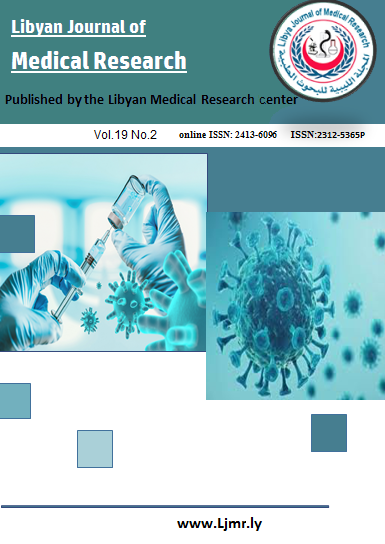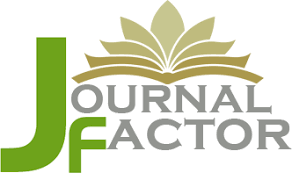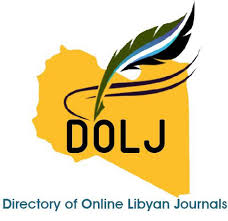The Effectiveness of Autologous Platelet-Rich Fibrin (PRF) in Enhancing Nerve Regeneration Following Mandibular Third Molar Surgery: A Meta-Analysis of Randomized Controlled Trials
DOI:
https://doi.org/10.54361/LJMR.19.2.35Keywords:
Platelet-Rich Fibrin (PRF), Nerve Regeneration, Mandibular Third Molar Surgery, Inferior Alveolar Nerve, Neurosensory Disturbance, Meta-Analysis Randomized Controlled Trials (RCTsAbstract
Background: Mandibular third molar surgery can lead to neurosensory disturbances due to potential damage to the inferior alveolar nerve. Platelet-rich fibrin (PRF), an autologous blood-derived biomaterial, has been proposed as a potential adjunct to enhance nerve regeneration and improve clinical outcomes following these procedures. Objective: This meta-analysis aimed to evaluate the effectiveness of autologous PRF in enhancing nerve regeneration following mandibular third molar surgery based on available randomized controlled trials. Material and Methods: A comprehensive search was conducted across multiple databases, including PubMed, Cochrane Library, Web of Science, and Embase for randomized controlled trials evaluating PRF application after mandibular third molar surgery. Studies were assessed for quality using the Cochrane risk-of-bias tool. Data on nerve regeneration outcomes and related clinical parameters were extracted and analyzed. Results: Four studies met the inclusion criteria, with only one study directly measuring nerve regeneration outcomes. This study demonstrated significant improvement in the brush directional stroke discrimination test (BDSD) in the PRF group (p < 0.001), though no significant differences were observed in two-point discrimination (TPD) and self-reported neurosensory disturbance (SR-NSD). The other studies focused on related clinical outcomes, including pain, swelling, trismus, and bone healing, consistently showing the benefits of PRF application. Meta-analysis of pain reduction showed a standardized mean difference of -0.74 (95% CI: -0.97 to -0.52) favoring PRF. Conclusions: While limited evidence suggests PRF may enhance nerve regeneration following mandibular procedures, more research specifically focused on neurosensory outcomes after third molar surgery is needed. PRF consistently demonstrates benefits for pain reduction, swelling control, and improved healing, making it a promising adjunctive treatment. Future studies should incorporate standardized neurosensory testing to better evaluate PRF's impact on nerve regeneration.
Downloads
References
1. Hugoson A, Kugelberg CF: The prevalence of third molars in a Swedish population. An epidemiological study. Community Dent Health. 1988, 5:121-138.
2. Mantovani E, Arduino PG, Schierano G, et al.: A split-mouth randomized clinical trial to evaluate the performance of piezosurgery compared with traditional techniquein lower wisdom tooth removal. J Oral Maxillofac Surg. 2014, 72:1890-1897. 10.1016/j.joms.2014.05.023
3. Susarla SM, Dodson TB: Risk factors for third molar extraction difficulty. J Oral Maxillofac Surg. 2004, 62:1363-1371. 10.1016/j.joms.2004.05.214
4. Aravena PC, Cartes-Velásquez R, Rosas C: Signs and symptoms of postoperative complications in third molar surgery. J Int Dent Med Res. 2014, 7:40-46.
5. Cheung LK, Leung YY, Chow LK, Wong MC, Chan EK, Fok YH: Incidence of neurosensory deficits and recovery after lower third molar surgery: a prospective clinical study of 4338 cases. Int J Oral Maxillofac Surg. 2010, 39:320-326. 10.1016/ j.ijom.2009.11.010
6. Barone A, Marconcini S, Giacomelli L, Rispoli L, Calvo JL, Covani U: A randomized clinical evaluation of ultrasound bone surgery versus traditional rotary instruments in lower third molar extraction. J Oral Maxillofac Surg. 2010, 68:330-336. 10.1016/ j.joms.2009.03.053
7. Koyuncu BÖ, Zeytinoğlu M, Tetik A, Gomel MM: Effect of tube drainage compared with conventional suturing on postoperative discomfort after extraction of impacted mandibular third molars. Br J Oral Maxillofac Surg. 2015, 53:63-67. 10.1016/j.bjoms.2014.09.021
8. Pouchain EC, Costa FW, Bezerra TP, Soares EC: Comparative efficacy of nimesulide and ketoprofen on inflammatory events following removal of impacted third molars: a split-mouth, prospective, randomized, double-blind study. Int J Oral Maxillofac Surg. 2015, 44:876-884. 10.1016/j.ijom.2015.03.003
9. Choukroun J, Adda F, Schoeffler C, Vervelle A: Une opportunité en paro- implantologie: le PRF. Implantodontie. 2001, 42:55-62.
10. Dohan Ehrenfest DM, de Peppo GM, Doglioli P, Sammartino G: Slow release of growth factors and thrombospondin-1 in Choukroun's platelet-rich fibrin (PRF): a gold standard to achieve for all surgical platelet concentrates technologies. Growth Factors. 2009, 27:63-69. 10.1080/08977190802636713
11. Farrag TY, Lehar M, Verhaegen P, Carson KA, Byrne PJ: Effect of platelet rich plasma and fibrin glue on facial nerve regeneration in a rat model. Laryngoscope. 2007, 117:157-165. 10.1097/01.mlg.0000249726.98801.77
12. Kuffler DP: An assessment of current techniques for inducing axon regeneration and neurological recovery following peripheral nerve trauma. Prog Neurobiol. 2014, 116:1-12. 10.1016/j.pneurobio.2013.12.004
13. He Y, Chen J, Huang Y, Pan Q, Nie M: Local application of platelet-rich fibrin during lower third molar extraction improves treatment outcomes. J Oral Maxillofac Surg. 2017, 75:2497-2506. 10.1016/j.joms.2017.05.034
14. Canellas JVDS, Medeiros PJDS, Figueredo CMDS, Fischer RG, Ritto FG: Platelet-rich fibrin in oral surgical procedures: a systematic review and meta-analysis. Int J Oral Maxillofac Surg. 2019, 48:395-414. 10.1016/j.ijom.2018.07.016
15. Xiang X, Shi P, Zhang P, Shen J, Kang J: Impact of platelet-rich fibrin on mandibular third molar surgery recovery: a systematic review and meta-analysis. BMC Oral Health. 2019, 19:163. 10.1186/s12903-019-0824-3
16. Lu Y, He Y, Weichao M, Fengjuan Z, Liu J: Effect of platelet-rich fibrin on the recovery after third molar surgery: A systematic review and meta-analysis. J Craniomaxillofac Surg. 2024, 52:1095-1108. 10.1016/j.jcms.2024.06.022
17. Rodrigues EDR, Pontual AA, Macedo RAP, Nascimento E, Vasconcelos BCE: Evaluation of bone repair with platelet-rich fibrin following the extraction of impacted third molars - randomized clinical trial. Med Oral Patol Oral Cir Bucal. 2023, 28:e433-e441. 10.4317/medoral.25856
18. Barone S, Bennardo F, Salviati M, Antonelli A, Giudice A: Evaluation of the usefulness of platelet-rich fibrin (PRF) in mandibular third molar surgery with 3D facial swelling analysis: a split-mouth randomized clinical trial. Head Face Med. 2025, 8. 10.1186/s13005-025-00482-0
19. Tabrizi R, Moslemi H, Shafiei S, Dastgir R, Peacock ZS: Does Platelet-Rich Fibrin Enhance Recovery From Neurosensory Disturbance Following Mandibular Fractures? A Double-Blind, Split-Mouth Randomized Clinical Trial. Craniomaxillofac Trauma Reconstr. 2024, 17:NP90-NP96. 10.1177/19433875241257737
20. Choukroun J, Diss A, Simonpieri A, et al.: Platelet-rich fibrin (PRF): a second- generation platelet concentrate. Part V: histologic evaluations of PRF effects on bone allograft maturation in sinus lift. Oral Surg Oral Med Oral Pathol Oral Radiol Endod. 2006, 101:299-303. 10.1016/j.tripleo.2005.07.012
21. Marx RE: Platelet-rich plasma: evidence to support its use. J Oral Maxillofac Surg. 2004, 62:489-496. 10.1016/j.joms.2003.12.0
Downloads
Published
Issue
Section
License
Copyright (c) 2025 Taher Hamed Mahmud Al Khfif, Haytham, A. K. Matougs, Ahmed s Mikael, Rabab R.Elhassi, Aseel. k .sharif (Author); Rasha j Abraheem (Translator)

This work is licensed under a Creative Commons Attribution-NonCommercial-NoDerivatives 4.0 International License.
Open Access Policy
Libyan journal of medical Research (LJMR).is an open journal, therefore there are no fees required for downloading any publication from the journal website by authors, readers, and institution.
The journal applies the license of CC BY (a Creative Commons Attribution 4.0 International license). This license allows authors to keep ownership f the copyright of their papers. But this license permits any user to download , print out, extract, reuse, archive, and distribute the article, so long as appropriate credit is given to the authors and the source of the work.
The license ensures that the article will be available as widely as possible and that the article can be included in any scientific archive.
Editorial Policy
The publication of an article in a peer reviewed journal is an essential model for Libyan journal of medical Research (LJMR). It is necessary to agree upon standards of expected ethical behavior for all parties involved in the act of publishing: the author, the journal editorial, the peer reviewer and the publisher.
Any manuscript or substantial parts of it, submitted to the journal must not be under consideration by any other journal. In general, the manuscript should not have already been published in any journal or other citable form, although it may have been deposited on a preprint server. Authors are required to ensure that no material submitted as part of a manuscript infringes existing copyrights, or the rights of a third party.
Authorship Policy
The manuscript authorship should be limited to those who have made a significant contribution and intellectual input to the research submitted to the journal, including design, performance, interpretation of the reported study, and writing the manuscript. All those who have made significant contributions should be listed as co-authors.
Others who have participated in certain substantive aspects of the manuscript but without intellectual input should only be recognized in the acknowledgements section of the manuscript. Also, one of the authors should be selected as the corresponding author to communicate with the journal and approve the final version of the manuscript for publication in the LJMR.
Peer-review Policy
- All the manuscripts submitted to LJMR will be subjected to the double-blinded peer-review process;
- The manuscript will be reviewed by two suitable experts in the respective subject area.
- Reports of all the reviewers will be considered while deciding on acceptance/revision or rejection of a manuscript.
- Editor-In-Chief will make the final decision, based on the reviewer’s comments.
- Editor-In-Chief can ask one or more advisory board members for their suggestions upon a manuscript, before making the final decision.
- Associate editor and review editors provide administrative support to maintain the integrity of the peer-review process.
- In case, authors challenge the editor’s negative decision with suitable arguments, the manuscript can be sent to one more reviewer and the final decision will be made based upon his recommendations.













